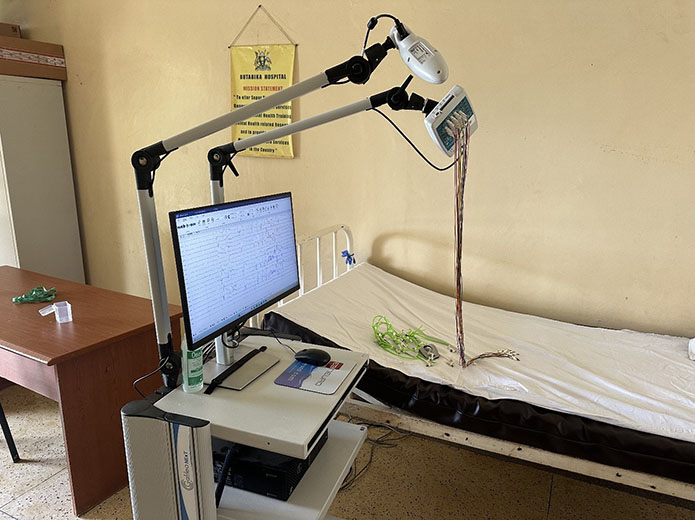Electroencephalography (EEG) Machine
One of the powerful tools helping doctors in this mission is a remarkable machine called the Electroencephalography (EEG) machine

Imagine being able to listen to the brain to capture its silent electrical whispers and understand what might be going wrong deep inside. That is exactly what the EEG does. It measures the brain’s electrical activity using small, flat metal discs called electrodes, which are carefully placed on the patient’s scalp. These electrodes are not randomly positioned; they follow an internationally recognized pattern to ensure that they can detect brain activity from just beneath the scalp about 3 to 5 millimeters deep
EEG tests are not done routinely; they are performed when a doctor needs specific answers. Perhaps a patient has experienced unexplained seizures, or maybe they are battling symptoms that suggest a brain tumor. Sometimes, a patient might be struggling with a sleep disorder, sudden confusion, or the lingering effects of a stroke. In each of these cases, the EEG can help pinpoint abnormalities, allowing doctors to make more accurate diagnoses and craft more effective treatment plans.
Among the most common uses of EEG at Butabika is the diagnosis of epilepsy. In epilepsy, the brain’s electrical activity becomes abnormal, leading to recurrent seizures. An EEG can detect these unusual patterns, confirming the diagnosis and guiding doctors on the best path forward. But the machine's usefulness doesn’t stop there; it can also highlight other brain conditions like encephalopathy, a broad term for any disease that alters brain function or structure.
In a world where much about mental health remains unseen, the EEG machine reminds us that even the quietest voices can be heard if only we know how to listen




